#early 20th century russian art
Text
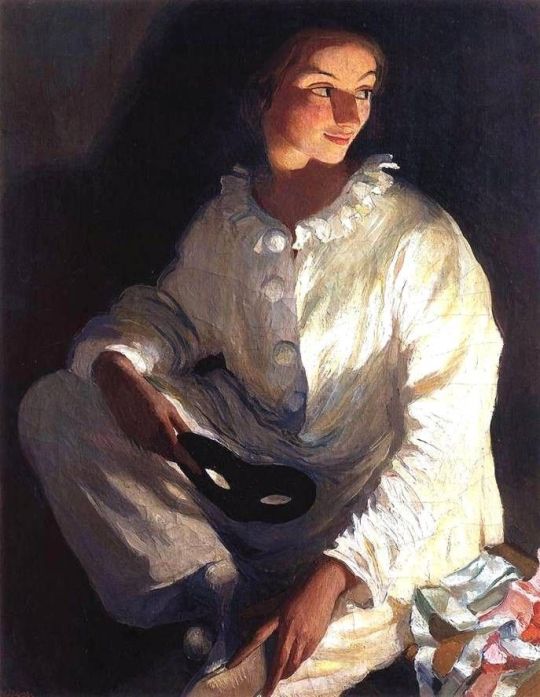
Zinaida Serebriakova (Ukrainian, 1884-1967) • Self-Portrait as Piero • 1911 • Odessa Fine Arts Museum, Odessa, Ukraine.
#art#women in white#painting#la robe blanche#fine art#self portrait#zinaida serebriakova#ukranian artist#woman artist#art history#early 20th century russian art#art blog#oil painting#art appreciation#art lovers
297 notes
·
View notes
Text

Alexander Ivanovich Vakhrameyev (Russian/Soviet, 1874-926) • Tram Hangers • 1920
#art#painting#fine art#art history#alexander vakhrameyev#russian/soviet artist#genre painting#figurative art#early 20th century russian art#pagan sphinx art blog#art blogs on tumblr#art blogs#art appreciation#artwork#artist#winter street scene
84 notes
·
View notes
Text

Vasily Baksheev (Russian/Soviet, 1862 – 1958) • The Down-at-Luck at Dinner • 1901
#art#fine art#painting#paintings of domestic interiors#paintings of interiors#emotions in artworks#art history#oil painting#early 20th century russian art#vasily baksheev#early 20th century#20th century art#russian artist#the painted room art blog#genre painting#interior with figures
43 notes
·
View notes
Text
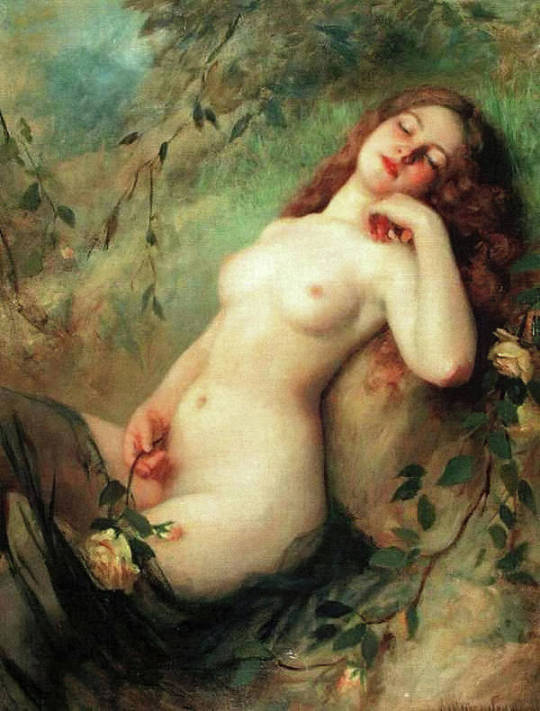
A sitting nude, c. 1900
By Victor Karlovich Shtemberg
#art#painting#fine art#classical art#russian art#german art#oil painting#aesthetic#beauty#german painter#russian painter#20th century art#women#female figure#female nude#european art#1900s#early 1900s
3K notes
·
View notes
Text

Boris Kustodiev (1878-1927)
"Winter. Maslenitsa festivities" (1919)
Maslenitsa, also known as Butter Lady, Butter Week, Crepe week, or Cheesefare Week, is an Eastern Slavic religious and folk holiday which has retained a number of elements of Slavic mythology in its ritual. It is celebrated during the last week before Great Lent; that is, the eighth week before Eastern Orthodox Pascha.
The traditional attributes of the Maslenitsa celebration are the Maslenitsa effigy, sleigh rides, and festivities. Russians bake bliny and flatbread, while Belarusians and Ukrainians cook pierogi and syrniki.
#paintings#art#artwork#cityscape#winter#boris kustodiev#russian artist#maslenitsa#holiday#eastern orthodoxy#christianity#snow#folklore#religious holidays#bright#colorful#colourful#1910s#early 1900s#early 20th century
69 notes
·
View notes
Text
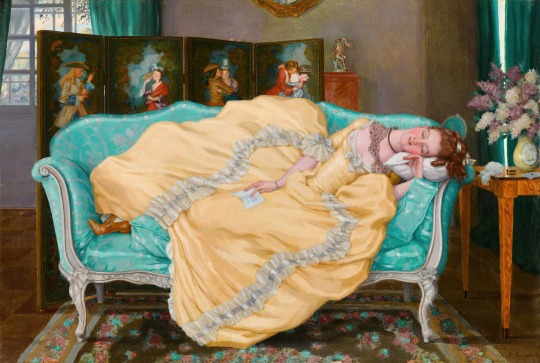
Sleeping Lady in a Room, 1919
Konstantin Andreevich Somov
#konstantin somov#russian art#art#painting#art history#fashion#portrait#1910s#early 20th century#mood#lazy#sleeping#colors#yellow
238 notes
·
View notes
Text



Balalaykas made and painted by Russian peasants and Russian artists (early 20th century)
#Россия#Russia#photos#vintage#russian musical instruments#balalayka#balalaykas#russian#russian artists#artists#russian culture#culture#russian art#art#early 20th century#20th century
29 notes
·
View notes
Text

Kuzma Petrov-Vodkin (Russian, 1878-1939) • Pink Still Life • 1918 • State Tretyakov Gallery, Moscow
#kuzma petrov-vodkin#art#fine art#early 20th century art#art history#art of the still life blog#still life#painting#russian artist#art blog#artist#artwork
6 notes
·
View notes
Photo

Russian oil painting of a reclining beauty, early 20th century.
#russian art#russian#female#classical art#reclining nude#woman#russia#female figure#art#20th century#early 1900s#brunette#female portrait#traditional art
87 notes
·
View notes
Text
On This Day
17 January 1904
The Cherry Orchard (Вишнёвый сад / Vishnyovyi sad) by Russian playwright Anton Chekhov opened at the Moscow Art Theatre, as directed by Konstantin Stanislavski.
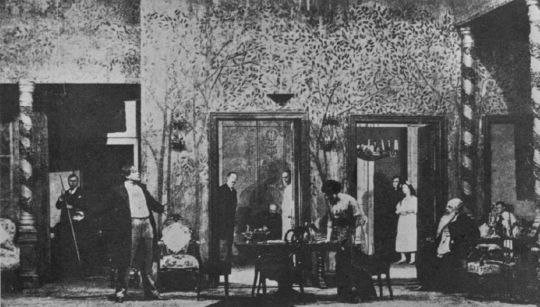
Although Chekhov had envisioned the play as being a comedy (with elements of farce), Stanislavski directed it as a tragedy against the wishes of the playwright. Despite this, the play was a massive success and was quickly translated into several languages and presented around the world as a masterful work of drama.
Unfortunately, Chekhov's health at this point was deteriorating, and The Cherry Orchard would be his final work as he passed in July of 1904.

#theatre#theater#history#dramatist#literature#stage#dramatic literature#konstantin stanislavski#anton chekhov#the cherry orchard#russia#russian#moscow art theatre#on this day#on this date#this day in history#otd#20th century#early 20th century#light academia
0 notes
Text

Zinaida Serebriakova (Russian/French, 1884-1967 • Portrait of E.E. Zelenkova • 1913
#art#painting#fine art#art history#zinaida serebriakova#woman artist#woman painter#russian/french artist#portrait#female portrait#women in white#la robe blanche art blog#art lovers on tumblr#art blogs on tumblr#early 20th century russian art
72 notes
·
View notes
Text

Nikolay Petrovich Bogdanov-Belsky (Russian, 1868-1945) • Going to Work • 1921
#art#painting#fine art#art history#nikolay bogdanov belsky#russian artist#early 20th century Russian art#realism#landscape with figures#horses in artworks#artwork#spring#pagan sphinx art blog#art blogs on tumblr#art lovers on tumblr#oil painting
28 notes
·
View notes
Text
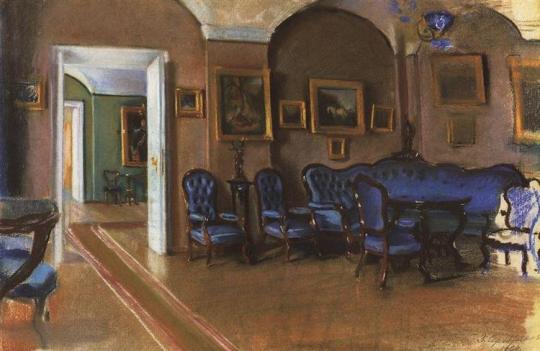
Zinaida Serebriakova (Rusian/French, 1884-1967) • Gatchina, Interior • 1922
'Gatchina. Interior' was created in 1922 by Zinaida Serebriakova in Symbolism style
#art#fine art#painting#paintings of domestic interiors#paintings of interiors#zanaida serebriakova#symbolism style#woman artist#woman painter#early 20th century russian art#the painted room art blog#oil painting#painter#artist#art appreciation
26 notes
·
View notes
Text
LGBT literature of the 1860s–1910s. Part 5
After a long pause, the list is back! Here we have a couple of plays, accounts by two trans women, lesbian poetry, and more.
1. Despised and Rejected, by A.T. Fitzroy (Rose Allatini; 1918). A pacifist novel published during World War One? With gay and lesbian characters? Yes, that was sure to get people in trouble. Its publisher was fined and the judge called it “morally unhealthy and most pernicious”. So, Dennis is a young composer who hates violence and therefore refuses to go to war. He also suffers because he is a “musical man”, that is, gay, and loves Alan, art-loving son of a wealthy businessman. His friend Antoinette, meanwhile, is “strangely attracted” to a woman. Nevertheless, the two attempt to love each other. When the war begins, Alan appears in Dennis’ life again, and they try to avoid being sent to the front together. Alan also persuades Dennis to accept who he is. Edward Carpenter himself defended the novel, saying that “the book is also a plea for toleration of a very much misunderstood section of humanity”.
Read online
2. Autobiography of an Androgyne, by Ralph Werther (1918). Ralph Werther, also known as Jennie June, wrote this autobiography for doctors, and it is very revealing. Being a New York fairy (male prostitute) and possibly a trans woman, they tell frankly about the city’s gay underworld of the early 20th century and their personal experience, which is sometimes too frank and dark perhaps, but all the more interesting.
Read online
3. Poems by Mikhail Kuzmin. Kuzmin was not just the author of Russia’s first gay novel, but also a poet. Many of his works were dedicated to or mentioned his lovers. I’d recommend Where Will I Find Words (in English and Russian), Night Was Done (both in English and Russian), from the 1906-1907 collection Love of This Summer (available fully in Russian), mostly based on his love affair with Pavel Maslov in 1906. And also If They Say (in English and Russian), which is a great statement.
4. The Loom of Youth, by Alec Waugh (1917). A semi-biographical novel based on Evelyn Waugh’s older brother’s experience at Sherborne School in Dorset. It is a story of Gordon Caruthers’ school years, from the age of 13 to 19, and it is full of different stories typical for public schools, be it pranks and cheating exams or dorm life and sports. Although the homosexual subject was quite understated, the author implied that it was a tradition and open secret in public schools. The book became popular and soon caused a great scandal. Worth noting that before that Alec was expelled for flirting with a boy.
Read online
5. Two Speak Together, by Amy Lowell (1919). Lowell was a famous American poet and lesbian. Many of her poems were dedicated to her lover, actress Ada Dwyer Russell, specifically the section Two Speak Together from Pictures of the Floating World. These poems are infused with flower imagery, which wasn’t uncommon for lesbian poetry of the time.
Read online
6. De berg van licht/The Mountain of Light, by Louis Couperus (1905-1906). Couperus is called the Dutch Oscar Wilde for a reason: this is one of the first decadent novels in Dutch literature. It is also a historical one, telling about a young androgynous Syrian priest Heliogabalus who then becomes a Roman Emperor. Homoerotism, hedonism, aestheticism: Couperus creates a very vivid world of Ancient Rome. He also covered the topic of androgyny in his novel Noodlot, which was mentioned in Part 3 of this list.
Read online in Dutch
7. Frühlings Erwachen/Spring Awakening/The Awakening of Spring, by Frank Wedekind (1891, first performed in 1906). This play criticized the sexually oppressive culture prevalent in Europe at the time through a collection of monologues and short scenes about several troubled teens. Each one of them struggles with their puberty, which often leads to a tragic end. Like in The Loom of Youth, homosexuality is not the central focus of the play, but one character, Hänschen, is homosexual and explores his sexuality through Shakespear and paintings. The play was later turned into a famous musical.
Read online in German or in English
8. Twixt Earth and Stars, by Radclyffe Hall (1906). Though it wasn’t known to many at the time, these poems were dedicated to women, some to Hall’s actual lovers.
Read online
9. The Secret Confessions of a Parisian: The Countess, 1850-1871, by Arthur Berloget (published in 1895). This account is similar to the Autobiography of an Androgyne, albeit shorter. The author nowadays is thought to be a trans woman. They describe their love for women’s dresses, the euphoria from wearing dresses, makeup and wigs, the life as a “female impersonator” in Parisian cafe-concerts, and their love affair with a fellow prisoner. The autobiography is not available online, but you can read it in Queer Lives: Men’s Autobiographies from Nineteenth-Century France by William Peniston and Nancy Erber.
10. At Saint Judas’s, by Henry Blake Fuller (1896). This is possibly the first American play about homosexuality. It is very short. An excited groom is waiting for his wedding ceremony in the company of his gloomy best man. They are former lovers, and this short scene is not going to end well…
Read online
Previous part is here
#lgbt literature#lgbt fiction#queer history#queer fiction#lesbian literature#russian literature#gay literature#gay history#spring awakening#lesbian history#blog: history#blog: literature
261 notes
·
View notes
Text

We are happy to announce the highly anticipated release of the book "Russian Icons from the Mid-17th to the Early 20th Centuries: The Collection of Oleg Kushnirskiy" published by "EKSMO"! Edited by art historian Sofia Birina, this is the first extended catalog of Oleg Kushnirskiy's icon collection, introducing it to the academic discourse.
We are very grateful to our authors — Anna Ivannikova, Dr. Wendy Salmond, and Dr. Alek D. Epstein, as well as to experts — Sergey Khodorkovskiy and Nikolay Zadorozhny, the director of the Museum of Russian icon, for their contribution to our book project and our mission of researching and promoting the Russian icon painting all over the world.
We also thank Sergey Brun for the translation, Andrey Chumachenko for the design, and Pavel Ascheulov for the photos!
#russianicon#russianicons#artbook#iconography#artcollection#antiques#publication#artnews#orthodoxicons#orthodoxart#christianart#religiousart
261 notes
·
View notes
Text

The Young Couple, 1904
Wassily Kandinsky
#Wassily Kandinsky#russian art#colors#illustration#fairytale#art#painting#art history#fashion#1900s#early 20th century
120 notes
·
View notes